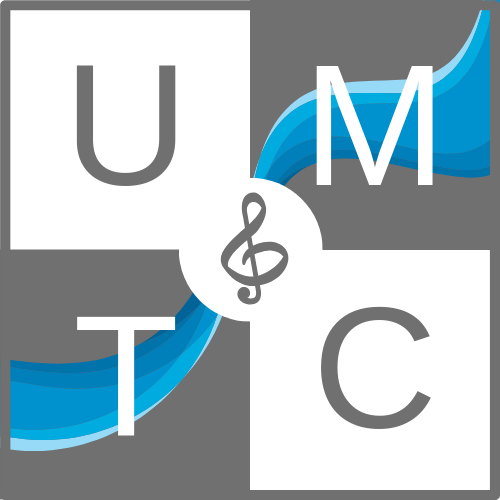Blog post written by Katie Pistilli.
Music therapy is a creative arts therapy. As creative arts therapists, music therapists work to harness the power of music and creativity to address their client’s non-musical goals. These goals could be related to speaking, movement, or emotional expression, among many others. Upstate Music Therapy Center therapists most often work in school-based settings, and our students often have goals related to achieving success in the classroom. Success happens when the therapist can structure a motivating creative environment where the child can thrive.
Music therapy sessions are individualized. No one session will look alike. Music therapists always try to structure the session to meet the one-of-a-kind needs of a particular student.
While all sessions are unique, in a school-based setting, there are a few things sessions have in common:
1. There is organic music.
Organic music is naturally produced using instruments played by the therapist, live in the moment. The opposite of organic music is inorganic, meaning it is recorded and the therapist is not actively creating it. Music therapists make their own music during the session to best accommodate the needs of the student. By playing instruments such as guitar, piano, percussion, and singing in the moment, the therapist can create a flexible and individualized creative environment. Keep in mind, this does not mean there is no recorded music used at all. There are certainly scenarios where a therapist may utilize inorganic music as well.
2. There is often a greeting song and a “goodbye” song.
While this is certainly not a universal rule, many music therapists choose to start their session with a greeting or check-in song. For many students, routine and repetition is comforting. New music can sometimes be confusing, and by starting the session with a familiar activity or song may elicit a sense of peace amidst an otherwise hectic day. The greeting song also offers an opportunity to address and talk about emotions or events of the day.
Similarly, as a child completes their music therapy session and prepares to transition back to the classroom, the therapist uses another familiar song. For children, this song prompts a “goodbye” conversation. Leaving a peaceful and fun setting can be difficult and using a familiar ending song or activity can ease that transition.
3. Interventions are implemented.
Music therapy interventions are activities that aim to address a child’s goals. Think of interventions as the “meat” of the session—they are where the child will grow in their skills and learn. From session-to-session, these activities may vary. Below are some examples of music therapy interventions:
To help a child calm down and stay in their seat the therapist may use grounding techniques such as rhythm and movement. When kids feel a steady beat in their body, their heart rate and breathing may sync up to that beat and create a sense of calm.
To practice learning new information a therapist may present the child with a song to help them remember material. We can all relate to being able to remember song lyrics, but possibly struggling with numbers or new information. That same concept applies in music therapy. Songs can be used for children to practice the alphabet, numbers, spelling, or social skills such as conversations.
To express and process complicated emotions a therapist may implement a songwriting intervention. This could include writing words and making a completely original song, or, changing the words to a familiar one. Either way, the student is encouraged to create music that reflects their thoughts and mood.
A music therapist uses music to assist their client in infinite ways. The possibilities for growth in music therapy are endless. If you have a child or know someone who may benefit from music therapy, you can find more information on referrals and assessments by clicking below.
The post What Does a Music Therapy Session Look Like was written by Katie Pistilli and first published on Upstate Music Therapy Center.

